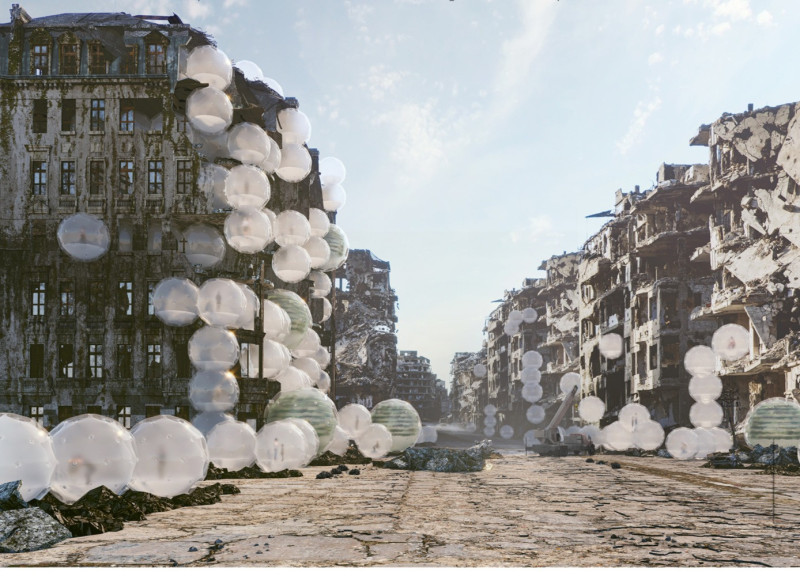5 key facts about this project
Foam Habitat responds to the challenges faced by those living in post-war urban environments. Located in areas affected by conflict, the design offers adaptable living units that aim to address the needs of displaced individuals and families. The concept revolves around inflatable structures, creating lightweight habitats that provide essential living functions while fostering a sense of community and resilience.
Design Concept and Functionality
The project is built around the idea of air-inflated double-skin bubble structures. These units are designed to fit within the existing framework of ruined urban spaces, allowing them to blend into their surroundings. Each habitat consists of three main components: a kitchen/dining/bath unit, a living/sleeping unit, and a work unit. This modular arrangement permits various layouts, making it versatile and responsive to different spatial conditions and needs.
Material Selection
Ethylene tetrafluoroethylene (ETFE) is the primary material utilized in Foam Habitat. This lightweight and durable material offers an effective solution for the challenges posed by inflatable structures. It allows for easy on-site installation and provides insulation while letting natural light into the living areas. The choice of ETFE enhances comfort and security for the residents, creating a welcoming atmosphere.
Sustainability Features
Sustainability is a core principle of the design, reflected in energy and water management systems integrated into the project. Photovoltaic panels installed on top of the inflatable structures generate electricity for use within the habitat. Additionally, a rainwater harvesting system captures and purifies rainwater, promoting self-sufficient living. These features not only meet basic needs but also support sustainable living in difficult environments.
Community Interaction and Agricultural Integration
Oversized bubbles that include hydroponic farming systems add an important aspect to the habitat. These spaces enable residents to grow their own food, enhancing their independence and promoting social interaction. The inclusion of agricultural elements fosters community engagement and supports the rebuilding of social ties, which is vital in a post-conflict context.
Foam Habitat presents a practical solution to the pressing needs of those displaced by conflict. It combines functionality with a focus on community well-being, creating living spaces that nurture both individual and collective resilience.



















































